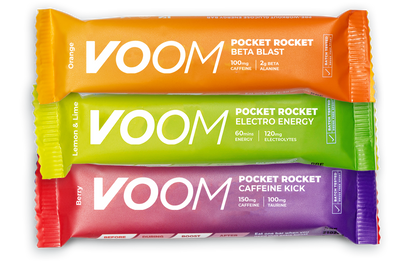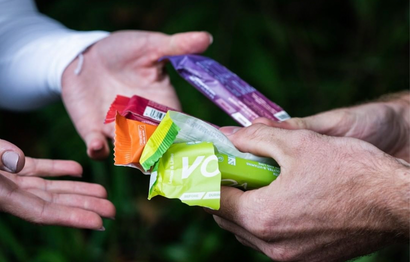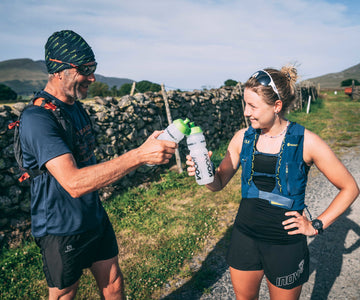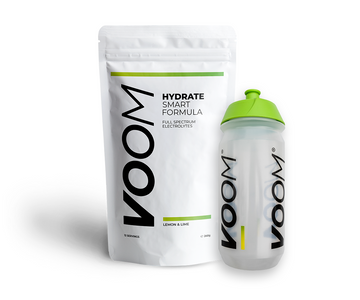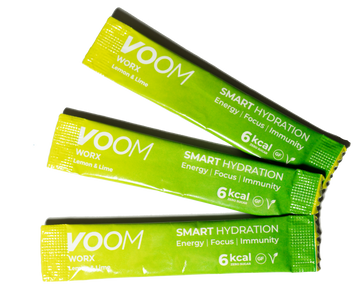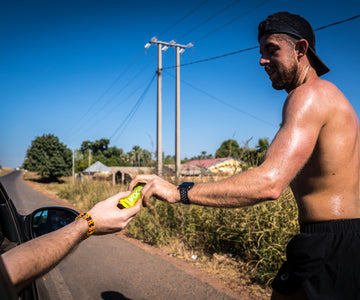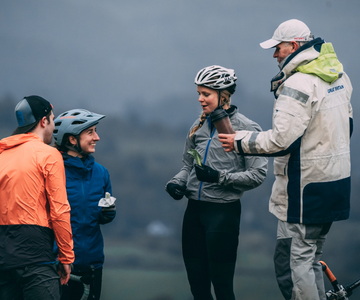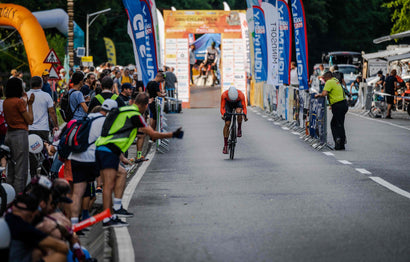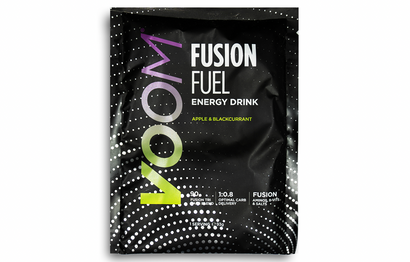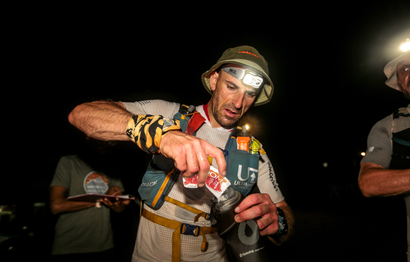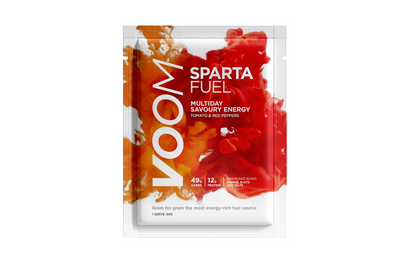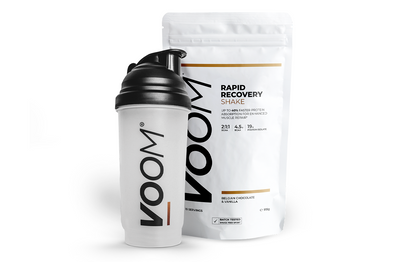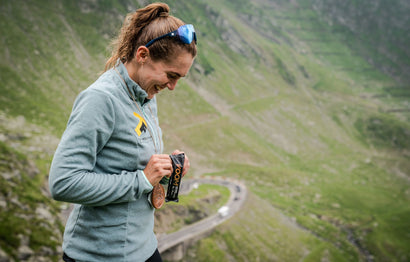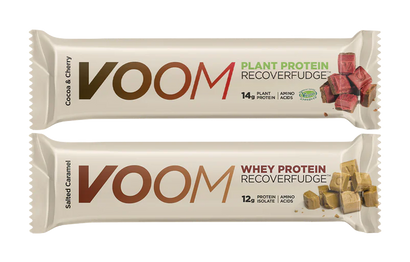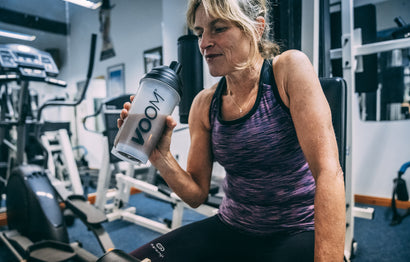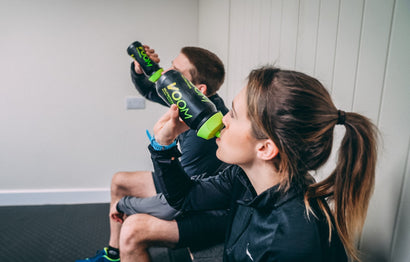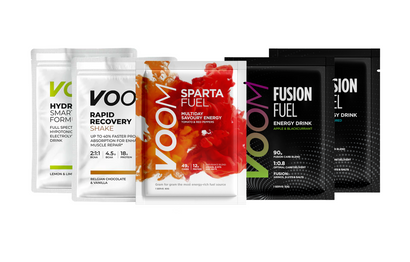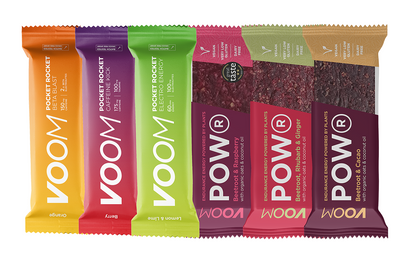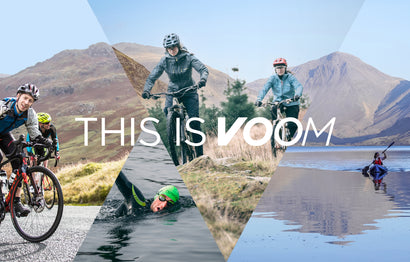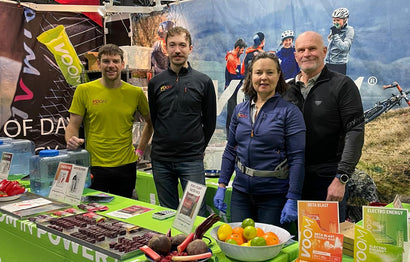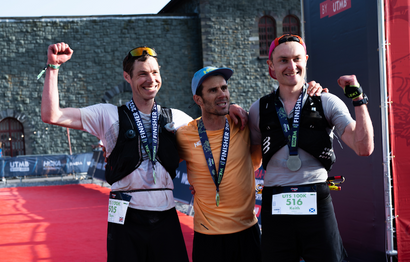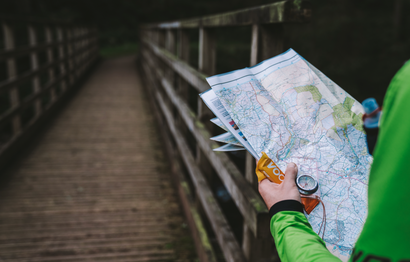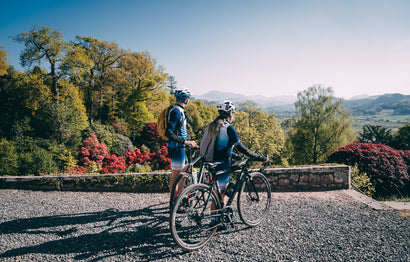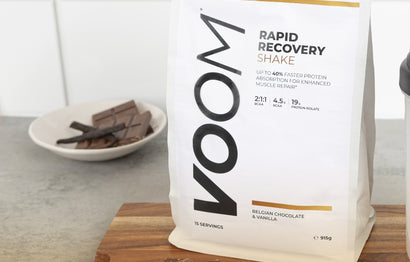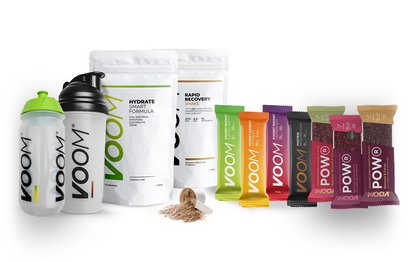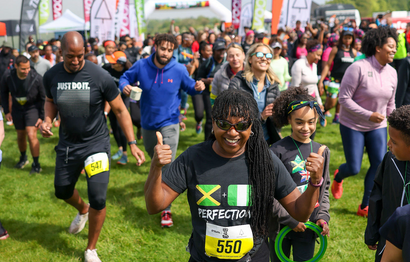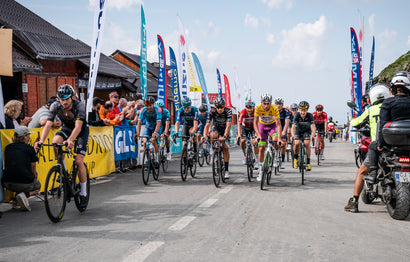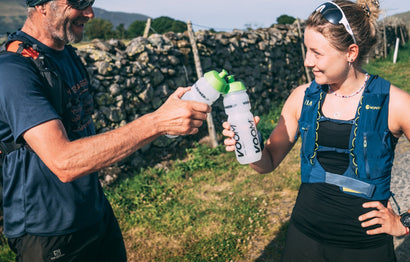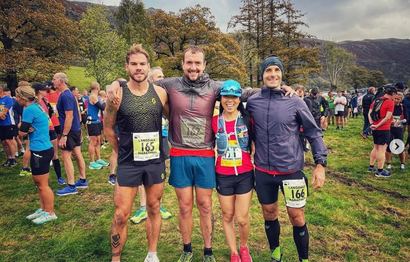For this month’s ‘marathon corner’ we’ve used expert local knowledge to bring you strength training that can be done at home. We're lucky to have leading physio clinic The Body Rehab just a stone’s throw away from VOOM HQ and Physiotherapist Christie Byrne CSP kindly took the time to explain some running-specific exercises that can really compliment your training.
Whether training for your first marathon or looking for a PB, strength & conditioning (S&C) can be important to reduce injury risk and boost performance. All of the exercises below can be done at home without any equipment, although you may like to include resistance bands or weights as you progress. We've suggested two exercises to target glutes, hamstrings, quads, calves and core, although there's often crossover. Christie recommends including this S&C set 2 – 3 times per week to compliment your running - consistency is key!
Our video briefly shows you 10 great strength exercises for runners, in less than three minutes, but if you stick with us you'll get a full explanation of how to do the exercise, learn which muscles are used for each, and how you can progress the exercises over time. Or jump to the video...

Where single sides need doing in isolation the time taken to do the opposite leg provides the recovery time. You should aim to feel a bit of a burning sensation in the target muscle by the end of your reps to ensure we push the muscle enough to trigger adaptation. If some exercises are difficult try with fewer reps and gradually build the numbers. If the reps are feeling comfortable try one of the suggested progressions or use a small weight.
Video Top 10 S & C Exercises for Marathon Training
10 Best Strength Exercises for Runners
- Straight leg calf raises
- Bent leg calf raises
- Side lying leg raises
- Fire hydrants
- Glute bridge / single leg glute bridge
- Single leg deadlift
- Plank
- Deadbugs
- Wall sits / overhead squats
- Reverse lunges
Calf raises with straight leg
The calves are important in the propulsion phase of running, especially when running uphill, and as the name suggests, this exercise really isolate the calves, predominantly the gastrocnemius. Improved muscular endurance of the calves is often linked with reduced risk of injuries such as plantar fasciitis and achilles tendonitis.

Stand on one leg on the floor (easier) or edge of a step beside something which you can use to keep balance. Contract the calf to flex your ankle and push up onto your tip toes, holding briefly at the top before slowly lowering back down. Aim to do 3 sets of 15 reps, or until a strong burning of fatigue is felt. You may need to start with fewer but aim to build to be able to do over 25 reps in one go!
Progression: Over time build the number of reps you do and then move to perform your calf raises on the edge of a step; starting from a lower position means the muscle works through a longer range of motion. You can also hold a weight in one hand to add extra resistance. Eccentric muscle work can also be really beneficial; this involves lowering down slowly over about five second. Raise up on both legs, transfer weight to the target leg and then slowly lower down using an eccentric contraction. This will also help strengthen the achilles.
Calf raises with bent leg
Similar to a straight leg calf raise but this exercise puts more emphasis on recruiting the soleus muscle which is equally important for running. If a single leg calf raise is initially too hard you can do them with both legs to start with.
As with the straight leg calf raise this can be performed on the floor or the edge of a step depending on what level you’re at. Bend your knee slightly to bring the knee forward over the toes and push down through the ball of your foot to lift up onto your toes. Slowly lower down and repeat 12-15 reps although you should eventually build the strength to perform 25 in one go!
Progression: Bent leg calf raises can be performed on the edge of a step and/or holding a weight. Eccentric calf lowers are also great - raise up on both legs and them transfer weight to one leg and lower down in a really slow, controlled action over about 5s.
Side lying leg raises
Side lying exercises require the gluteus medius to engage, a really important muscle in stabilising the pelvis whilst running, but one which many runners could do to strengthen. You should really feel the burn on this one!
Lay on your side with top leg fully extended, the lower leg can be straight or bent slightly and you can also use your hand for balance. Avoid letting the hips roll backwards as this will reduce the effectiveness of the exercise. Slowly raise and then lower your leg to engage the glutes. Whilst doing the exercise keep the toes of the extended leg pulled up towards your shin which will engage the posterior chain. Repeat continuously for around 30 seconds, 10-15 reps, or until a strong burning is felt. Try to gradually increase the time or reps each week.

Progression: If the lateral leg raises become easy or comfortable, a resistance band around the knees or ankles will make the glutes work that bit harder, and a five second hold with the leg fully raised will increase the burn! You can also push down through the elbow and lower knee or foot to lift the hips off the ground into a side plank. This will require some core stability and start to recruit the glute of the lower leg too.
Fire Hydrant
This exercise really targets the glutes, in particular the gluteus medius and aids pelvic stability whilst running.
Start on hands and knees on the floor with hands directly below your shoulders and knees below your hips. Engage your core and lift one knee off the floor, opening the hips to raise the knee out to the side as high as possible without rotating the pelvis – keep the hips level. Slowly reverse the movement to complete the action and repeat 12-15 times on each leg.
Progression: Add a resistance band to increase the work of the glutes.
Glute bridge
This is a great exercise to build strength in the powerful gluteus maximus muscles, but also works the hamstrings. The further away from the body the feet are, the more the hamstring will have to work.
Lay on your back with your feet flat on the floor hip-width apart, knees bent up. Push down through the feet engaging the glutes to lift your hips up off the floor. This can be done initially with both legs, and then progressing to single leg by raising one leg out straight in front. For a dynamic exercise you can raise up and down 12-15 times in a slow, controlled manor, and then a hold at the top for 20-30s is a good static exercise.

Progression: Glute bridge walk outs involve coming up into a glute bridge position (both legs) then slowly raising one foot off the floor and taking a small step away from you, transferring weight to that leg and then moving the other leg to join the first. Walk out in this way in several small, controlled steps and then walk back in. This will engage the hamstrings more, particularly when your legs are almost straight, and feet are far away from your hips. Perform 3-5 walk outs.
Single leg dead lift
The dead lift, and single leg deadlift works the hamstrings and whole posterior chain.
Stand on one leg and slowly push the other leg straight out behind you, with toes flexed towards your shin, whilst bending forward towards the ground with your torso. To maintain good form you should focus on hinging from the hips not bending from the back, and keep the hips level. The standing leg should be almost straight, with a soft knee bend, so the hamstring is working under stretch on the way down. Once you've reached the floor, or as far as flexibility allows, use your hamstring to pull yourself back up to standing. Only go as far down as feels comfortable as this shouldn’t be a wobbly balancing act, it should be a leg and hip strengthening exercise which provides some stability work for the lower leg and ankle. 3 sets of 12-15 reps should provide enough of a training stimulus.

Progression: Start to add a small weight to give more resistance whilst doing single leg deadlifts. You can also increase the range which you work through by standing on the edge of a small step so that you have to stretch further to reach the floor. This is called a deficit dead lift and works the hamstring through a longer range.
Wall sit squat drill
A wall sit hold requires an isometric contraction of the quadriceps which you should increase in duration over time.
Stand approximately 30cm in front of a wall with feet hip width apart. Bend the knees, slowly moving the hips back towards the wall to form a squat position. Ensure the knees don’t collapse inwards during the squat - the glutes will be required to keep the knees held out in a strong position. The back should be pressed against the wall and the quads engaged to hold the position. Flexibility and strength will determine how low a squat you can perform but a 90 degree knee bend is ideal, but you may need to start with less of a knee bend. Hold the position for 30-60s and repeat three times.

Progression: Over time you can start standing slightly further away from the wall which will require a deeper squat position and thus work the quads more. You can also transfer weight to one leg and raise the other straight out in front to perform a single leg hold for 30s each leg. This will increase the work of the quad and engage the hip flexor of the raised leg.
Overhead squat
The overhead squat is a continuation of the wall sit but is a dynamic movement which works on quad strength and the slow, downward part of the action requires eccentric contraction which can build strength too.
Stand with feet facing forward, but very slightly outwards, hip-width apart and raise your arms above your head, shoulder-width apart, palms facing each other. Think about keeping your shoulder blades pulled back and down. Slowly bend your knees and push your hips backwards to come down into a squat position. Ideally bend your knees to 90 degrees. During the squat you should ensure your knees are kept pushed outwards and don’t collapse in. Pause for a second at the bottom and then stand back up. Again, 3 sets of 12-15 reps should produce some level of burning or discomfort in the legs, particularly the quads, if you are working hard enough.

Progression: To make this harder, which many people will need to given the strength of the quadriceps muscle, you can start to bring in some weights, either a dumbbell in each hand or holding a bar. If you need heavier weights to feel it, you can skip the overhead element and use a bar resting on your shoulders or a weight held with both hands in front of the chest.
Reverse lunges
There are a variety of different lunge movements but here we’re looking at the reverse lunge which works the quads and to some extent the hamstrings, calves and glutes – it’s a great one for runners.
Start in a standing position with feet hip-width apart; transfer your body weight to one leg and take a decent step backwards with the other, aiming to avoid planting the foot directly behind the front foot in a tightrope position. Both feet should be facing forward. Simultaneously bend both knees to lower your hips and trunk towards the ground. Engage the core for balance and try to keep the front knee tracking in line with your front foot – don’t let the knee fall inwards. Lower slowly down until the back knee almost touches the ground, and then reverse the action to come back to standing. Do 10-15 reps the same way and then change legs completing 3 sets on each leg in total.

Progression: To make this one harder you can start to introduce some small weights such as dumbbells or kettlebells in either or both hands.
Dead bug core exercise
This is a great one to work on core strength which helps keep you stable whilst running.
Lay on your back with both arms straight up above you and knees bent at 90 degrees (lower legs parallel to the floor). Slowly extend the right arm, keeping it straight, whilst simultaneously extending and straighten the left leg away from you. Slowly reverse the movement and then repeat with the opposite arms/legs. Use your abs and core to stabilise. Perform 3 sets of 12-15 reps each way or continuously for 30-60s, building up over time.

Progression: Slightly raise your head and shoulders off the ground to increase the strength of contraction required in the abs. Another progression brings in a resistance band around both feet to resist the movement of your legs and engage the hip flexors.
Plank
A core classic but it can still be a tricky one as it uses isometric contractions (working to hold a position without moving) of the abdominal muscles to work against gravity.
Lay on your front with feet just wider than hip-width, and bring your elbows in beneath your shoulders, hands out in front. Push down through your forearms, elbows and feet to lift your body off the ground into a plank position. Don’t let your hips sag down, but equally don’t push your bum too far up into the air; we’re looking for a nice neutral pose using the core to stabilise the position – image a steel rod! Try to do 3 x 30s holds with a short recovery of 15 – 30s between each. Over time you want to look to increase the time 60s or longer.

Progression: If you master a static plank you can move between a low plank and a high plank (straight arms), in a slow, controlled manner which requires even more stability - check back on the video to see this in action.


